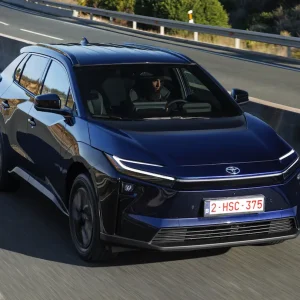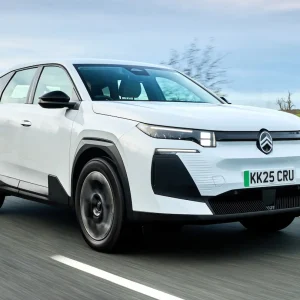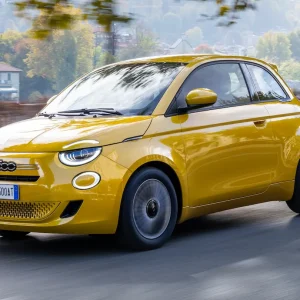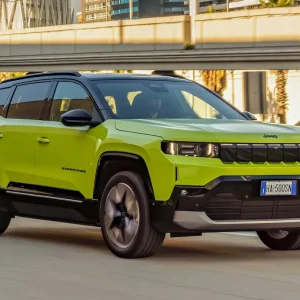Electrified motoring is here to stay, and Suzuki is all in – up to a point. It’s true that the manufacturer has now eliminated conventional petrol and diesel engines from its UK line-up. However, while all its cars are now badged as Hybrid, they are only mild hybrids, meaning no running on the battery alone, and instead just an electric helping hand for a petrol engine (for now anyway – a new plug-in hybrid SUV is due later this year).
The S-Cross we’re testing here, which is currently Suzuki’s largest model, deploys a 48V version of this system, which provides torque to support the petrol engine when accelerating, and also performs ‘electric motor idling’, essentially replacing fuel injection with power from the motor when the clutch is disengaged. That might not sound like much, but according to Suzuki it means a saving compared with the previous non-hybrid S-Cross of 25g/km of CO2, and just under 7mpg of fuel. Still, on the road you’d be hard-pressed to notice the system working away – it just feels like driving a perfectly adequate, petrol-powered SUV, but with a little more low-down shove when accelerating.
Unlike many modern SUVs, the S-Cross can back up its off-road styling with actual (selectable) four-wheel drive, at least with the Allgrip variant tested here. Aside from a bit more credibility, this could be an extra selling point for drivers in rural areas looking for a more secure drive in winter – though there is an inevitable price to pay on efficiency.
So far this year we’ve tested quite a few SUVs which their makers have tried to set up for sporty driving, but this is not the case with the S-Cross. Its controls are very much geared to be light and easy rather than feelsome and engaging, and it’s no dynamic driving machine, though the low-speed ride is still on the firm side. The handling balance can be improved a bit by choosing sport mode on the optional drive select control, which gets the four-wheel drive system involved a bit more under acceleration. For motorway cruising, on the other hand, the adaptive cruise control system, standard throughout the range, is impressively smooth.
The S-Cross itself is a bit hard to categorise. Suzuki says it’s a C-segment SUV, making it a rival for the likes of the Nissan Qashqai and Ford Kuga, but its smaller dimensions place it about halfway between those models and B-segment cars like the Nissan Juke and Ford Puma. Unfortunately, this might be because the S-Cross is now getting on a bit – the model first arrived in 2013, and was last facelifted only three years after that. There is some evidence of this when looking at the interior, as especially on the range-topping SZ5 model tested here it feels a bit outdated to have a conventional instrument panel in front of the driver with just a small digital read-out, rather than a fully digital display. Not all progress is good, and the fact that physical heating controls are still present will be welcomed by many, but the graphics on the 7in touchscreen satnav also look behind the times, although with Apple Carplay and Android Auto standard it is easy to switch to an up-to-date phone-based display. The S-Cross does feel spacious inside, and the panoramic roof fitted with SZ5 spec does a good job of allowing extra light in, without eating too much headroom.
As suggested previously, the Allgrip model does perform worse than the two-wheel drive equivalent on fuel economy and CO2 emissions, as well as purchase price, and unless the extra traction is really needed fleet drivers would be well advised to downgrade. Residual values are poor throughout the range, however. As for rivals, the S-Cross looks like OK value in the C-segment, although its smaller size will count against it on practicality, but it might have a harder time overcoming the appeal of newer, cheaper and not much smaller alternatives from the class below.
Suzuki S-Cross 1.4 Boosterjet Hybrid SZ5 Allgrip
P11D: £27,289
Residual value: 28.0%
Depreciation: £19,639
Fuel: £6,471
Service, maintenance and repair: £2,175
Cost per mile: 47.1p
Fuel consumption: 45.7mpg
CO2 (BIK band): 139g/km (30%)
BIK 20/40% a month: £136/£273
Boot space: 430 litres
Engine size/power: 1,373cc/129hp





